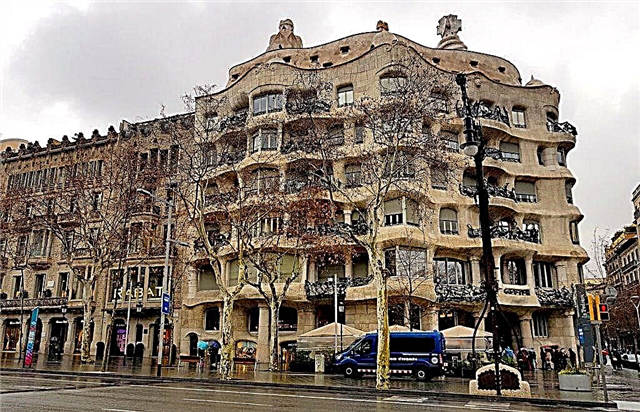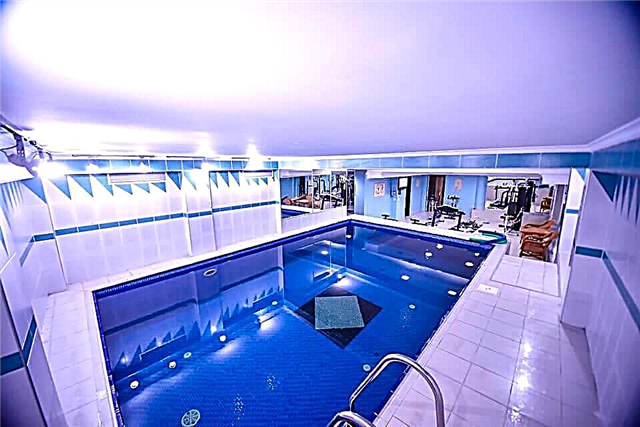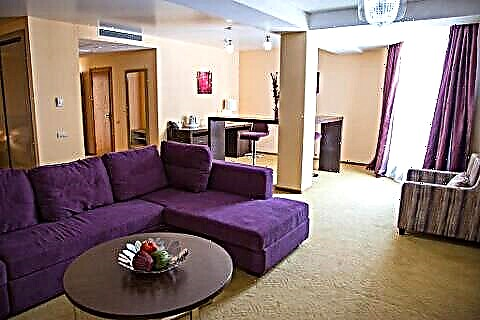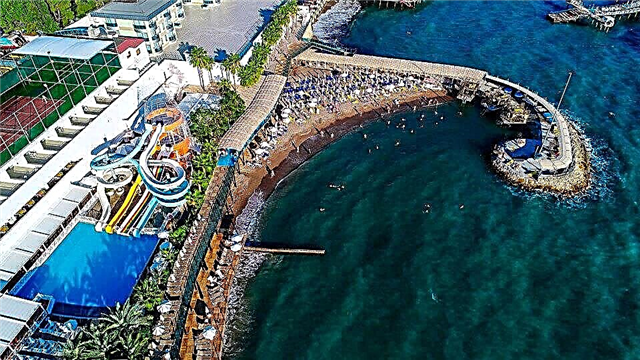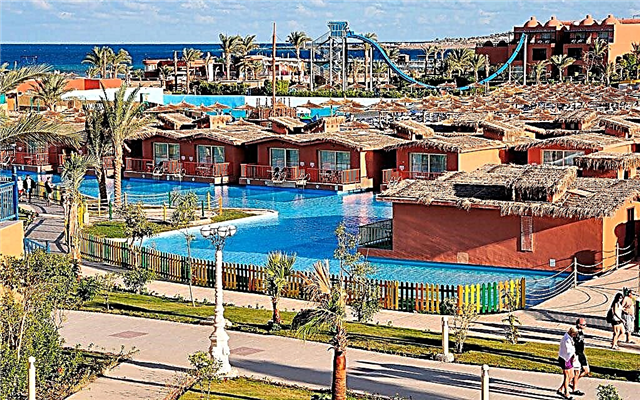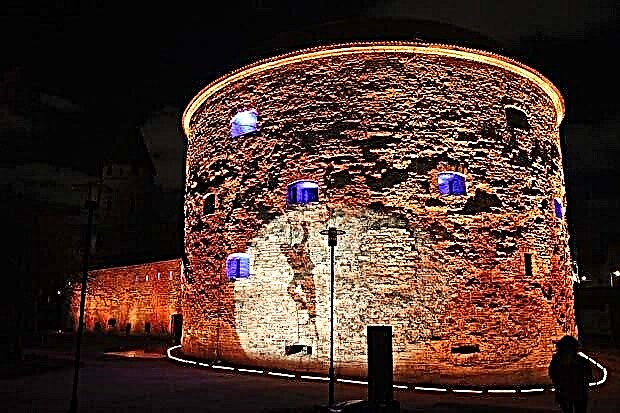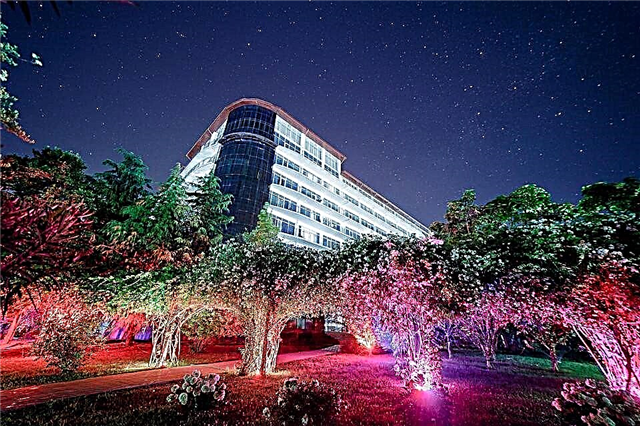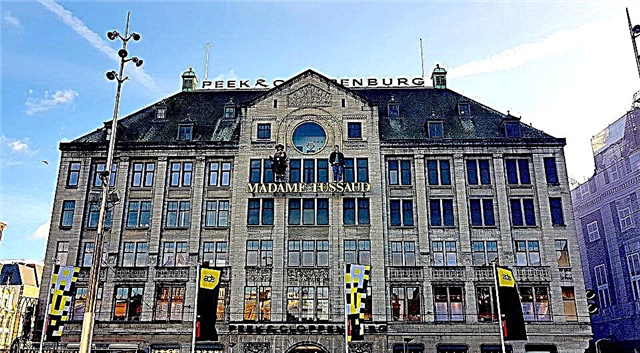The capital of the Netherlands is a wonderful city visited by millions of tourists every year. But many of them end up here for only a few days, following the passage from one European country to another. And, of course, every guest does not want to waste time in vain. What to see on your own in Amsterdam in 1 day? Let's talk about this in more detail, because we have compiled the optimal walking route about the city for those who have only 24 hours left.
Central station

It really is, in a way, "the heart of Amsterdam". After all, the main flow of tourists is received by the Central Station. Up to 250 thousand passengers arrive here annually. The station began to operate in 1889, and many tourists perceive it not only as a starting point or end point of their journey, but also look at the old building with curiosity.
Today, you can take a high-speed train from the Central Station to a number of major cities in European countries, and the journey will take a few hours, which is very convenient. There is also a bus station here. Flights departing from here connect Amsterdam with other cities in the Netherlands. And finally, ships that follow the city's large canals also dock at the Central Station.
Public library

If you find yourself in Amsterdam for 1 day, you are unlikely to stay in the library as a reader. And yet it's worth coming here. The construction of the magnificent complex cost the state 80 million euros. The 10-storey building now houses the largest library in Europe, and many Russians can only dream of such amenities.
Half of 1200 reading places are equipped with computers connected to the Internet. Also, tourists can visit the Library Museum, and go up to the 7th floor. The V&D La Place self-service restaurant is located here, the terrace of which is an excellent observation deck. Here you can drink coffee - after all, strength will still come in handy, there is a whole journey ahead, and admire the opening view of the city. The library works seven days a week from 10 am to 10 pm.
NEMO Museum

Actually, this is the Museum of Science - in the full sense of the word. In appearance, it very much resembles a green ship. Since you can stay here for a very long time, it is worth noting that the cafes are located on the 1st, 2nd and 5th floors. The 1st also sells souvenirs that you can't buy anywhere else. They repeat the models presented in the museum.
The first floor is dedicated to the structure of DNA and various chain reactions; here you can also watch a half-hour show on this topic. The ball factory is located on the second floor. Children are especially amused by the conveyor through which their stream flows. There are also numerous exhibitions that tell about the water cycle in nature, the work of electricity, etc. Those interested can watch popular science films.
The third floor is a huge laboratory. You can see how scientific experiments are carried out and even take part in this process. The fourth floor is dedicated to the human brain. Here they give lectures and conduct all sorts of tests to assess the functioning of the brain and sense organs. The fifth floor is a place where you can have a bite to eat, take a look at the city from the observation deck, and little tourists will be happy to spend time in the playroom.
Church of St. Nicholas

This ancient church is especially loved by the townspeople, because St. Nicholas is the patron saint of the city. Moreover, this is a church that has been truly “endured”. During the Reformation, there was no question of building new Catholic churches - and the old ones were banned. The Church of St. Nicholas, the construction of which began in 1884, became the "first sign" to herald the mitigation of the persecution of the Catholic faith. She turned out to be very beautiful, embodied two main styles - neo-baroque and neo-renaissance.
Two high towers crowning the facade, a bas-relief depicting the Savior surrounded by disciples, a sculpture of St. Nicholas - in a word, it is difficult to look away from the basilica. It has one more advantage: excellent acoustics. When the old organ sounds, numerous guests gather in the basilica to enjoy the music.
Berlage Exchange

The author of the architectural project is Hendrik Petrus Berlage, and his surname is now inextricably linked with his most famous brainchild. Seeming simplicity - this style is called "rationalism" - is deceiving. It is worth paying attention to the decorative clock tower, as well as the statues of the heroes of Holland that surround the stock exchange.
This is the knight Geisbrecht, whose name is covered with legends, Kun Jan Petersoon - thanks to him Holland began to dominate Indonesia, and the famous philosopher Hugo Grotius. At the end of the 20th century, the exchange ceased to exist within the walls of this building. Now you can visit a museum here that tells how it functioned. Visit the huge Main Hall - in 2002, the king of the Netherlands was married here. Visit exhibitions of paintings, among which are the canvases of the famous Van Gogh. There is also one of the best restaurants in the city.
I Amsterdam City Card - from 60 €
Public transport ticket - from 8 €
Holland Pass: 100 Attractions & Museums - € 40
Dam Square

No, the name of the square has nothing to do with the fair sex. It got this name because a dam was built here in the 13th century. Over time, the dam became so wide that a square arose here, and a city grew around it. Today the size of the square is 200 x 100 m. If you find yourself here, then other attractions will be within walking distance. And among them is the Red Light District. On the square itself, the Royal Palace, the New Church, and the Wax Museum face with their facades. Lovers of shopping will find the wonderful Bienkorf department store here. There are always a lot of tourists on Dam Square, so if you are looking for compatriots, you will definitely find them here.
Royal Palace

Previously, the palace was the town hall, now it is the royal residence. The ancient building, built in the middle of the 17th century, bears the features of ancient Roman architecture, this style is called "Dutch classicism". Outside - the severity of classical lines, and inside - richly decorated interiors - all this also characterizes the Royal Palace. It rests on a strong foundation made of thousands of wooden piles, and the sandstone from which the walls were erected, with its dark shade, only emphasizes the old-fashioned building. The palace is crowned with a weather vane, which the master gave the shape of a ship.
The main room of the Town Hall - the Central Hall - has an impressive size, and its height reaches almost 30 m. And, as if emphasizing the power of the monarch, on the floor, under his feet, there are images of the two hemispheres of the Earth. Since 1808, the palace is no longer used as a town hall. At first it belonged to Louis Bonaparte, then to the Royal House of Orange, and only in the 30s of the 20th century it was ceded to the state. Tourists are attracted by the opportunity to see the art gallery located in the palace. Here are collected works of famous artists, including Rembrandt.
New church

In fact, it is not that new, except perhaps in comparison with other attractions. The Calvinist church was built in the 15th century. It is located next to the Royal Palace. Permission to build it was given after the church of St. Nicholas turned out to be too cramped for the growing city.
Initially, the New Church was dedicated to two saints - Mary and Catherine. The Middle Ages is an era when fires often happened in cities. The Church of Saints Mary and Catherine did not escape them either.It burned three times - twice in the 15th century, and once in the middle of the 17th. After that, it was rebuilt with the addition of Gothic elements. The last reconstruction took place in the middle of the 20th century.
The New Church has been used more than once for inaugurations and weddings of royalty. Also, many famous people of the city are buried here. Today, services are not held in the church, but here you can see various exhibitions, listen to concerts of organ music.
Madame Tussaud's Wax Museum

Everyone has heard about this museum. It is a branch of the London Museum of the same name. The building on Dam Square was housed in 1991. Here you can see with your own eyes famous artists - artists, musicians, singers. As well as famous political figures. New figures appear here regularly. Today's viewer has the opportunity to contemplate Brad Pitt, Angelina Jolie and other idols of the public. The museum is open daily.
Flower market

You will not see such a market anywhere else - it is the only one in the world. This is perhaps the main attraction of the city. The fact is that it is floating. As early as the 17th century, merchants used boats to sail the canals and sell flowers. After the city moat was filled up at the end of the 19th century, the market moved to the place where it is still located.
Along the city embankment there are barges, and in them there are shops selling flowers. Here you can buy both luxurious bouquets and planting material. For example, tulip bulbs are sold individually and by weight at a reasonable price. Tourists come to this market, often just to admire it, but many people also make purchases. It is no coincidence that in Russia the very first, bright red tulips are called "Dutch".
Leidseplein

If you are a lover of nightlife, then this is the place for you. Until the early morning, Leidseplein is full of fun. Entertainment is presented here for every taste. There are theaters and cinemas, clubs, cafes, shops. It is impossible not to mention the street performers. here you will meet musicians and jugglers, magicians and fakirs. If you yourself have some talents, you can also perform. Grateful spectators are provided. As well as an open-air concert venue. They also sell amazingly delicious coffee. You can enjoy it in one of the cafes, or buy ground and take it with you.
Canal cruise

Many tourists admit that the canal cruise was the most exciting experience. Such excursions do not last long - an hour and a half. You can start your acquaintance with the capital of the Netherlands with such a trip, or end your journey with it. Often, listening to the story of the guide, tourists pay attention to some sights, and then visit them on their own. In total, about two hundred types of boats and ships run along the canals of the city. You can book a romantic trip "with lunch" or "with dinner", a thematic excursion, for example, to places associated with the name of Van Gogh. An hour trip costs about 15-16 euros.
4-Course Dinner Cruise - 82.50
Evening pizza cruise - 42.50 €
Canal boat cruise with open top - 16 €
Canal walk - € 12.68
1.5-hour evening canal walk - 17.20 €
Red light district

The red light district is known far beyond the borders of the country. Amsterdam is one of the few cities in Europe where the hottest entertainment is legalized. However, this was not always the case. In the 16th century, they fought against prostitution in the country, temporarily turned a blind eye to it in the 19th century, in the 20th - brothels again became illegal. And only in 1988, three years after the first international congress of ladies of easy virtue, prostitution in the Netherlands was recognized as an ordinary profession.
Today, the Red Light District is a city in miniature. It includes about two dozen streets. It has its own shops, cafes and even museums. About a thousand priestesses and priests of love are working here. It is allowed to appear on the panel from the age of 21. Guests are attracted by special showcases, behind which you can see girls or boys. If the space is free, you will see everything that is being done in the room through the window. Is there a client? The curtain falls.
You can find entertainment in the Red Light District during the day, but still the main life here begins at 23 o'clock. The prices are quite affordable - about 50 euros per visit. Homosexuals will also find partners here. But still, most of the tourists come here not for carnal pleasures, but just to take a look.
How to get from the airport to the center
And one more question that worries the vast majority of tourists - how to get to the center from the airport? This can be done in several ways. But, if you arrive on your own and no one will meet you, you should familiarize yourself with the city map in advance in order to know exactly where your hotel is.
Schiphol Airport is one of the largest in Europe, located 18 km from the capital of the Netherlands. After collecting your luggage, you can purchase a public transport ticket that will take you to the center. And if you spend money on a travel card, this will give you the opportunity to travel within the city by metro, tram, bus, electric train.
There is a railway station under the airport, from here in 15 minutes you can get to the main station of the city, and from here you can already move where you need to. Also, buses run from the airport, for example, flight number 197 will take you to the city center. Finally, the most convenient option is a taxi. Deliver, as they say, "to the porch" of the hotel. It will cost about 50-60 euros.
Of course, a tourist is unlikely to have time to see all the sights mentioned above in 1 day. If you still cherish such ambitious plans, it would be best to rent a car. Most of the guests of the capital of the Netherlands will choose the program to their liking. It is important that now you are familiar with the most interesting places of the city in absentia, and you can independently decide where to visit. Amsterdam is beautiful at any time of the year and always welcomes guests.
Guruturizma recommends the following hotels:


